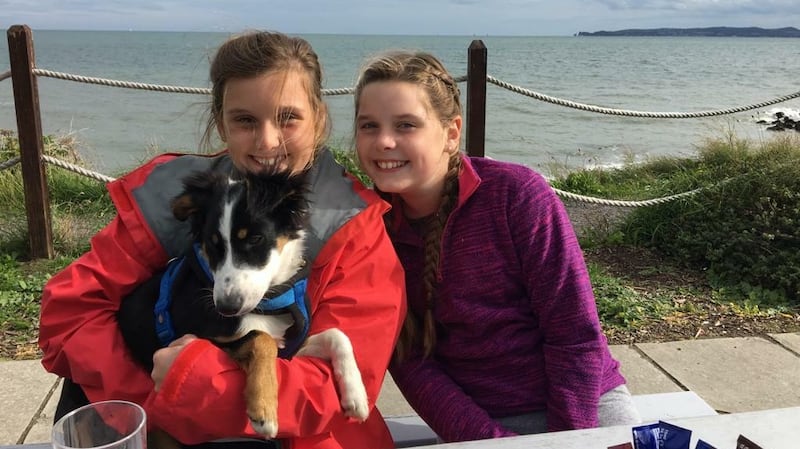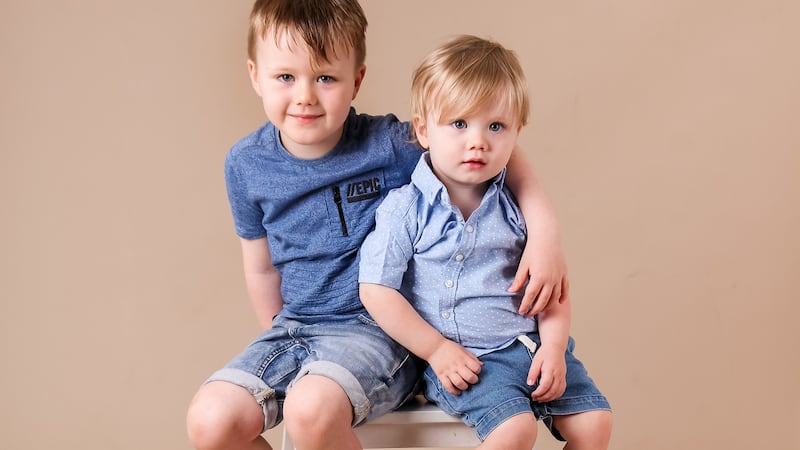The Irish Times asked readers living abroad if their children had returned to school or childcare after the Covid-19 lockdown. Here is a selection of responses we received, from Amsterdam to Auckland.

Claire Mara-McFerran, Amsterdam, the Netherlands
We have twin girls, Siún and Freya aged 12, attending the International School in Amstelveen. The government here call the lockdown an “intelligent lockdown”. This is interpreted as Dutch people understanding the risks and being responsible for their own actions. Most stick to the 1.5m social-distancing rule, although it is very relaxed.
Schools have been closed since March 13th and instead the children carried out their school work on Google Classroom, which has worked quite well. The government opened primary schools two weeks ago, with children split into two groups, each attending 50 per cent of the week.
The international school reopened on June 2nd. It was optional whether we sent the children to school, and we were obliged to fill out a survey. Fifty-five per cent of parents chose to send their children back, with the others preferring to remain at home.
In school the girls are in dedicated self-contained groups, and teachers rotate and ensure proper social distancing is maintained at all times, including during transition from activity to activity. Students have been asked to avoid public transport and only come to school by bike or car. They attend at 12.30pm and finish at 4pm, with Google Classroom in the mornings.
At school they receive academic support, PE and counselling. This includes support on study mindset, attitude and perseverance strategies. Finally they focus on areas such as creativity and idea generation. This is very different to a normal school day, but is set up to integrate them back into school life before they finish for summer in late June.
Overall the international school has taken a positive approach to returning, and the girls are happy to go back to some sort of normality and structure. And we are happy to see them go!
Katie Rice Eriksen, Denmark
The country locked down on March 11th. By April 16th, kindergartens and early school years settings reopened in the first wave. There was apprehension at first, as the whole country had been conditioned to almost cross the road to avoid other people, and now little kids, whose natural instinct is to huddle and cuddle, would be in close quarters every day?
It has gone surprisingly smoothly. We’re lucky that our local kindergarten has outdoor play areas, so my daughter has spent every day outside, rain or shine. All outdoor areas have been cordoned into large sections by police tape, to limit the interaction of kids to roughly the same small groups of six-12.
Marquee tents and festival toilets and sinks have been hired to ensure kids can stay outside all day and wash their hands regularly. Lunches are individual servings, and children cannot attend if they are sick in the slightest.
The local council has offered unemployed people (mainly from the hospitality industry who were laid off because of Covid-19) temporary positions as a cleaning crew in local schools, and kindergartens wash all toys and facilities throughout the day. So every few hours a clean selection of buckets and spades is deposited in the sandpit.
Additional trained teachers and childcare professionals have been hired (I don't know where the council found the budget), so in many towns across Denmark there is a new kind of utopia when it comes to the ratio of childcare adults to children. It has been invaluable in helping the kids adjust to a new normal.
The reopening of kindergartens has been based on a high degree of trust. Trust that other parents will not send a sick child to school. Trust in the adults minding our children.
A key message communicated before the reopening was that we cannot put the responsibility on the children to remember all the new rules. You cannot burden a four-year-old to take responsibility for other children’s health. The adults have the responsibility to remember the rules, and all the child has to do is the same as pre-corona: do what your teacher asks.

Suzanne Hunt, Stockholm, Sweden
My children never stopped going to school. Noah (8) is in second grade and Amélie (5) in final year of preschool. When the rest of Europe was shutting down at a rapid rate in mid-March we expected it to be the same in Sweden.
We have lived here four years and in that time I have learned much about Sweden and how it is different culturally to the rest of the world, even to its Scandinavian neighbours. The past few months have been a crash course in how different. When it became apparent that they were not closing the schools, myself and my husband were thrown into a difficult position.
Why is Sweden one of the only countries to keep lower schools open and should we keep them home? We researched. We compared and we listened. Like other Swedes, we learned to trust the government and they were talking a lot of sense. Ultimately we left them in school.
Measures were introduced to help the children navigate this time. Classes were kept going but much else was cancelled. Lunches were already staggered by class, and there’s staggered yard time.
Of course though, you can't compare like for like. In Sweden, class sizes are much smaller than in Ireland, teaching resources much higher. My son has 26 in his class with one teacher and two teaching assistants at a minimum.
Deirdre McLachlan, Christchurch, New Zealand
My two children returned to school five weeks ago. I am a nurse working part time, and my husband had to go into his office, so we were deemed to be essential workers. For the first three weeks we were in “level three” so only children of essential workers were sent to school. It was only a babysitting service really, so the days I wasn’t working, our kids were at home and I had to get all of their learning done with them.
The schools opened fully two weeks ago. My children’s school has about 700 students, and most returned. Only parents of the first two years are allowed on site for drop-off and pick-up. Pick-up times are staggered by year to avoid all the children leaving the grounds at the same time. Break times are staggered as well, so children aren’t outside together.
But the school playgrounds are open and they can use them. School assemblies are cancelled. School sports are still on hold, but club sports are starting back up with shortened seasons.
Caroline Kelly, Auckland, New Zealand
My children have returned to secondary school in New Zealand in the last two weeks after doing full online school days during the NZ lockdown. I know they cannot meet in big groups at school and their desks are further apart, but most other things have not changed. Lots of hand washing but no masks.
I did hear one daughter say that if you stay late at school you get to see “scary-looking” people in “hazmat suits” cleaning the school. But my youngest daughter is really happy because instead of the old school bus, they now have the buses that used to bring the tourists to and from the airport in Auckland, so free wifi, nice seats and more leg room!
Elizabeth O’Leary, Melbourne, Australia
I have lived and worked in Melbourne for 24 years and am from Killarney, Co Kerry. In Victoria, schools provided distance learning but were open to students with parents working in essential services. As my husband and I both work in healthcare, our children went to school where their online learning was supervised.
Last week, school opened for the first three grades of primary school and last two grades of secondary school. If all goes well, children will go back to school on June 9th and they will get the usual winter holiday break for the first two weeks in July. If there is any case of Covid-19 in the school community, the school closes again until contact tracing and cleaning is completed. Most kids here seem to be missing friends, not schoolwork.

Orla O’Reilly, Sydney, Australia
My children's daycare in Sydney never closed, and most in Australia were kept open throughout the crisis. Some parents chose to keep their children at home, particularly those with children at risk or those that had close family at risk. My two boys aged four and one continued to attend, which allowed my husband and I to continue working without having to also juggle childcare.
Our daycare was very proactive about protecting children and staff and their families. They minimised the amount of toys and items children would touch, they intensively clean the centre every evening, and they changed procedures and policies to minimise risk.
They stopped allowing parents in so all children are now dropped off and picked up at the door. There is hand sanitiser at the door. There is an increased focus on hand washing with the children singing hand-washing songs. As a result, our one-year-old now thinks hand washing is a really fun game.
There’s a much more stringent illness policy now – any children with any signs of a respiratory illness such as fever, cough, sore throat, or runny nose are excluded for at least three days, and may need a doctor’s certificate clearing them to return. Also staff do not attend if they are in any way ill. They have a very detailed Covid-19 policy around risk minimisation which puts our minds at ease.
We feel incredibly lucky to have had continued access to childcare, and since early April the government has been funding it and will continue to do so until at least the end of June.
Francesco Cavatorta, Quebec, Canada
My two boys have gone back to school on May 11th when Quebec reopened – to the dismay of the rest of Canada, all elementary schools with the exception of the ones in the greater Montreal area are open.
Parents who did not feel comfortable were given the option of keeping children at home and avail of online teaching. We decided to send our two boys back to school. They were both very happy.
Class sizes have been reduced (max 12 children a class), teachers seem to be more relaxed because they are responsible for only 12 kids, and my children seem to be doing better academically because teachers can spend more time with them. There are quite strict social distancing measures in place for the children and parents at drop-off and pick-up times, but also in class.
Kids periodically wash their hands, eat their snacks at their desks and take turns in the yard at recess. Despite these measures, reopening schools has given us and the children a sense of normality, and that is something important in these strange times.
Ciara O’Carroll, France
Up until last week my kids were not in the groups that could return to school. Following the première ministre’s announcement last Friday, their schools will open. My daughter (17) is in her final year, and her lycee will not be taking their year back at all. She participates in online classes which will continue until July 3rd.
My son (14) is in his final year of Collège-Brevet year. His year may go back voluntarily from next Tuesday, alternating weeks of “in school” and “at home” until July 3rd. Masks must be worn. I have decided not to put him back in school.
Both my children will stay home until the end of the school year and continue their distance learning.
Mary Fahy Deshe, Switzerland
Swiss primary and second-level schools opened on May 11th. The students are allowed to mix freely as they are not considered at high risk or vectors [for coronavirus]. The teachers must, however, maintain the 2m distance. All parties must stay home in the event of symptoms and of course all follow the hygiene rules. My son is 14 and hasn’t complained about being back.





















